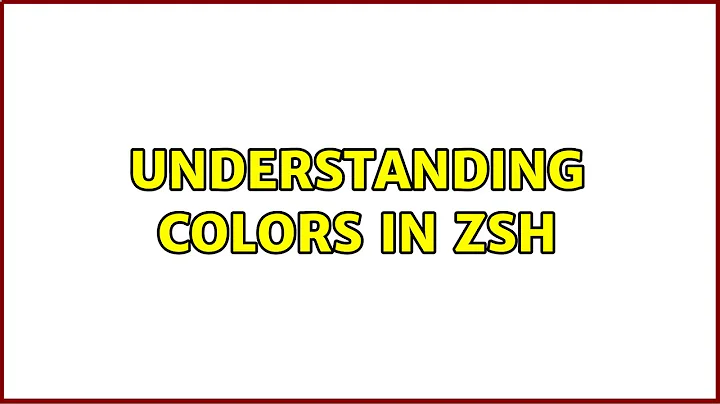Understanding colors in zsh
The colors function records the names of colors and similar attributes (bold, underline and so on) in the associative array color. This array associates names with terminal attribute strings, which are numbers, e.g. 00 ↔ normal, 42 ↔ bg-green, …
echo ${(o)color}
If you want to see how the array is built, look at the source of the function: which colors or less $^fpath/colors(N).
The colors function only defines names and escape strings (in the associative arrays fg and bg) for the 8 standard colors. Your terminal may have more. See this answer for how to explore what colors are available.
Related videos on Youtube
Amelio Vazquez-Reina
I'm passionate about people, technology and research. Some of my favorite quotes: "Far better an approximate answer to the right question than an exact answer to the wrong question" -- J. Tukey, 1962. "Your title makes you a manager, your people make you a leader" -- Donna Dubinsky, quoted in "Trillion Dollar Coach", 2019.
Updated on September 18, 2022Comments
-
 Amelio Vazquez-Reina over 1 year
Amelio Vazquez-Reina over 1 yearIn this thread, yoda suggests the following solution for using colors in
zsh#load colors autoload colors && colors for COLOR in RED GREEN YELLOW BLUE MAGENTA CYAN BLACK WHITE; do eval $COLOR='%{$fg_no_bold[${(L)COLOR}]%}' #wrap colours between %{ %} to avoid weird gaps in autocomplete eval BOLD_$COLOR='%{$fg_bold[${(L)COLOR}]%}' done eval RESET='$reset_color'Correct me if I am wrong, but if I understand correctly,
autoload colors && colorsallows you to call colors by their name, while the rest of the script just wraps them in${ $}.This made me think about the following questions:
- Is there a way to know what colors are loaded by calling
autoload colors && colors? - How do I know what colors are supported by my terminal?
- Is there a way to know what colors are loaded by calling




